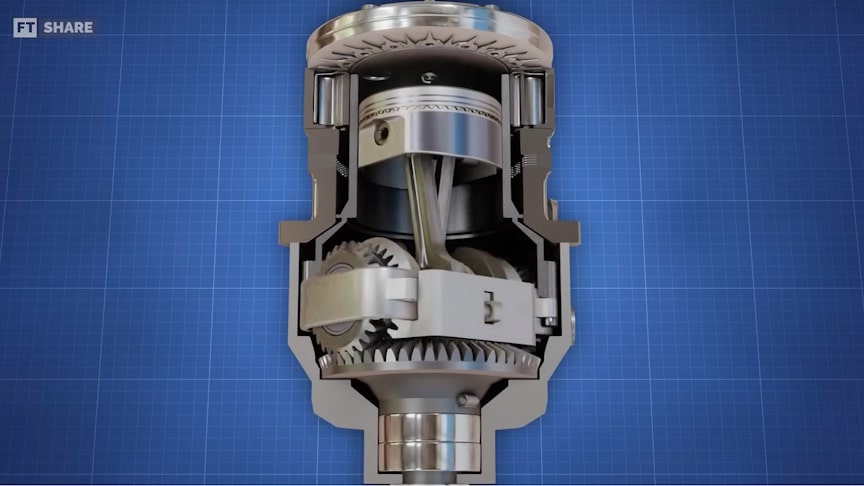The single Avadi piston uses a pair of connecting rods rather than just one. As piston motion occurs, the two rods move in a scissor-like fashion. Each rod is independently connected to a pinion gear at the bottom-end and those two gears rotate on a fixed ring gear attached to the crank case. The “fixed” ring-gear essentially is the only primary mechanical component that does not rotate.
source.image(PrtSc): Ft-share International
The piston, the cylinder, the connecting rods—and essentially all of the internal parts… with the exception of that fixed ring gear—rotate. Those two connecting rods and their corresponding pinion gears reside in what we call a “halfshaft.” Watch the video from Ft-share International:
While the half-shaft can be likened to the heart of the Avadi design, it is essentially the housing where up-and-down piston motion is translated to rotational motion. It is fixed to the output shaft that extends from the back of the engine and is connected to the final drive component being powered.
Advertisement
The ratio of the rotating gear-set (the two pinion gears and their relation to the fixed ring-gear) provides a reduction to the output shaft, which exponentially increases torque. That same motion also rotates the fan blades for air-cooling and provides an inheren.











